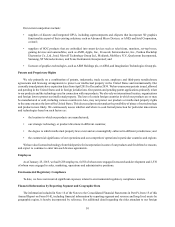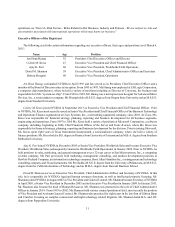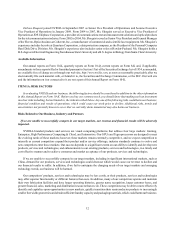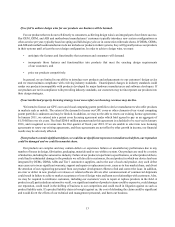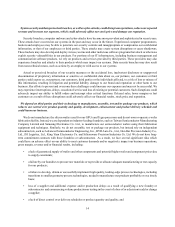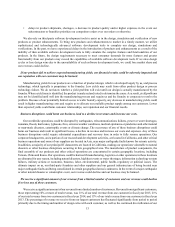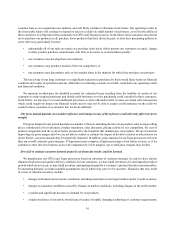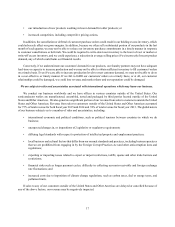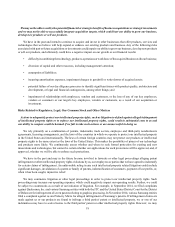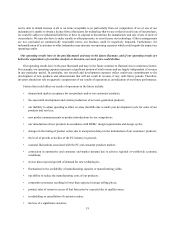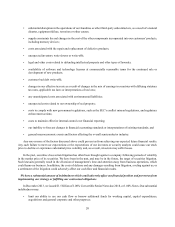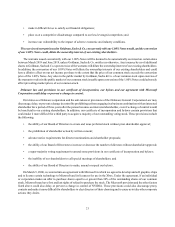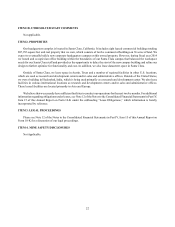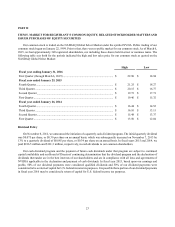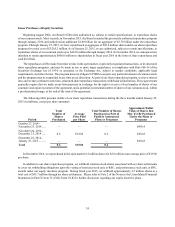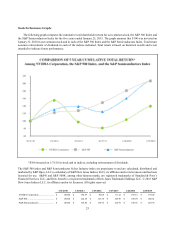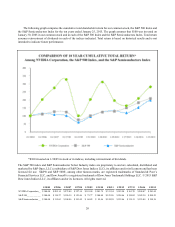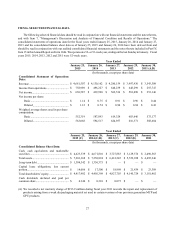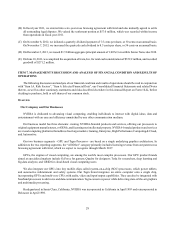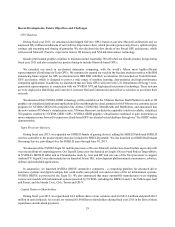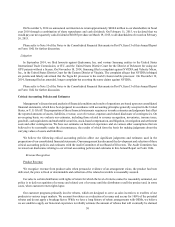NVIDIA 2015 Annual Report Download - page 100
Download and view the complete annual report
Please find page 100 of the 2015 NVIDIA annual report below. You can navigate through the pages in the report by either clicking on the pages listed below, or by using the keyword search tool below to find specific information within the annual report.20
• substantial disruption in the operations of our foundries or other third-party subcontractors, as a result of a natural
disaster, equipment failure, terrorism or other causes;
• supply constraints for and changes in the cost of the other components incorporated into our customers’ products,
including memory devices;
• costs associated with the repair and replacement of defective products;
• unexpected inventory write-downs or write-offs;
• legal and other costs related to defending intellectual property and other types of lawsuits;
• availability of software and technology licenses at commercially reasonable terms for the continued sale or
development of new products;
• customer bad debt write-offs;
• changes in our effective tax rate as a result of changes in the mix of earnings in countries with differing statutory
tax rates, applicable tax laws or interpretations of tax laws;
• any unanticipated costs associated with environmental liabilities;
• unexpected costs related to our ownership of real property;
• costs to comply with new government regulations, such as the SEC’s conflict mineral regulations, and regulatory
enforcement actions;
• costs to maintain effective internal control over financial reporting;
• our inability to forecast changes in financial accounting standards or interpretations of existing standards; and
• general macroeconomic events and factors affecting the overall semiconductor industry.
Any one or more of the factors discussed above could prevent us from achieving our expected future financial results.
Any such failure to meet our expectations or the expectations of our investors or security analysts could cause our stock
price to decline or experience substantial price volatility and, as a result, investors may suffer losses.
In the past, securities class action litigation has often been brought against a company following periods of volatility
in the market price of its securities. We have been in the past, and may be in the future, the target of securities litigation.
Such lawsuits generally result in the diversion of management's time and attention away from business operations, which
could harm our business. In addition, the costs of defense and any damages resulting from litigation, a ruling against us, or
a settlement of the litigation could adversely affect our cash flow and financial results.
We have a substantial amount of indebtedness which could adversely affect our financial position and prevent us from
implementing our strategy or fulfilling our contractual obligations.
In December 2013, we issued $1.5 billion of 1.00% Convertible Senior Notes due 2018, or 1.00% Notes. Our substantial
indebtedness may:
• limit our ability to use our cash flow or borrow additional funds for working capital, capital expenditures,
acquisitions and general corporate and other purposes;


